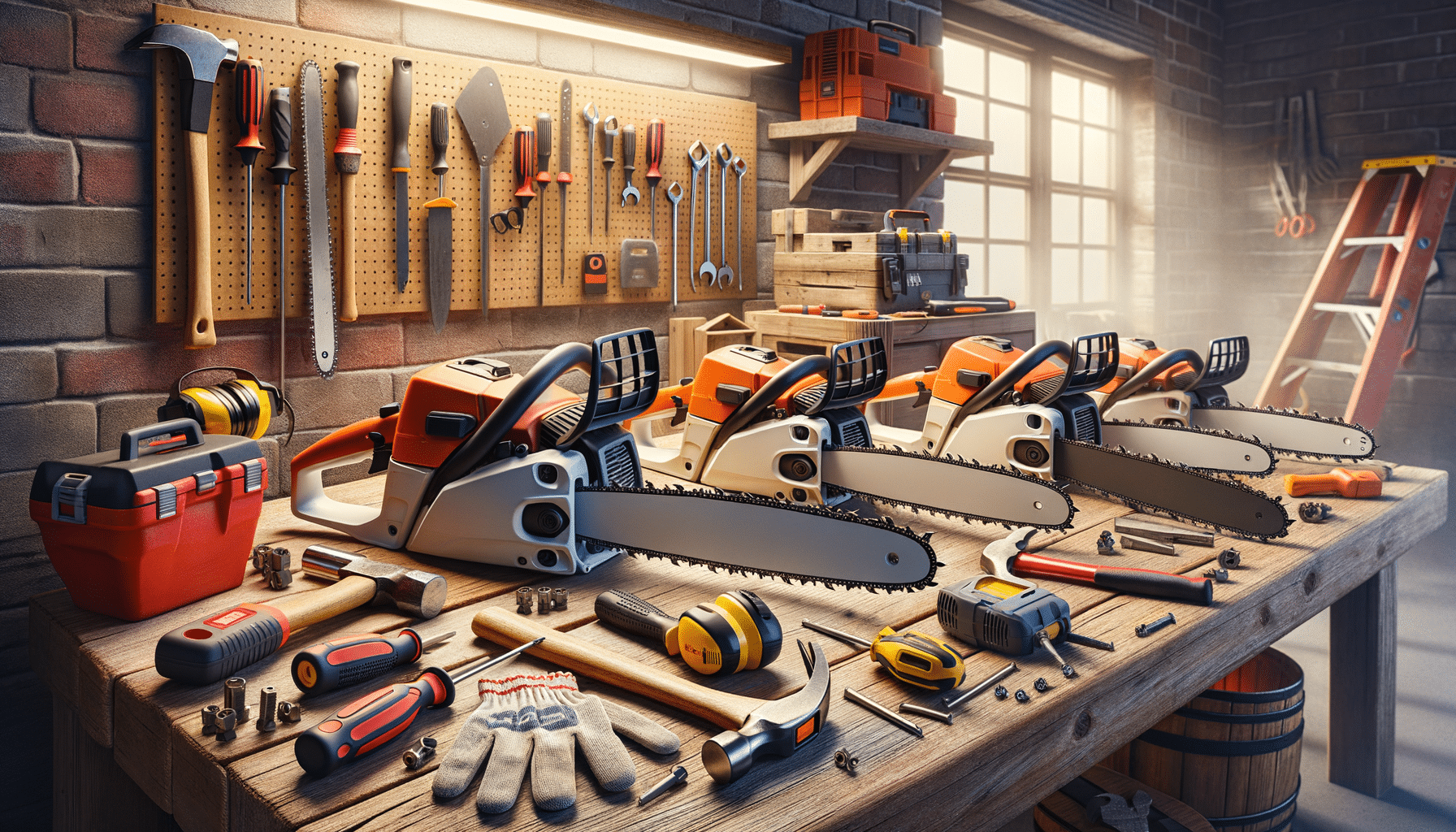Mastering the Art of Chainsaw Use for Homeowners and DIY Enthusiasts
Chainsaws have become essential tools for homeowners and DIY enthusiasts, offering versatility and efficiency for various projects.

Understanding Chainsaw Types and Their Applications
Chainsaws are indispensable tools for homeowners and DIY enthusiasts, offering a blend of power and precision for a variety of tasks. Understanding the different types of chainsaws available can help you make an informed decision that best suits your needs. Primarily, chainsaws are categorized into three types: gas-powered, electric, and battery-operated models. Each type has unique features, advantages, and limitations.
Gas-powered chainsaws are renowned for their power and mobility. They are generally used for heavy-duty tasks such as felling large trees or cutting thick logs. These chainsaws operate on a mixture of gasoline and oil, which allows them to deliver high power output, making them suitable for demanding outdoor projects. However, they require regular maintenance and produce emissions, which might not be ideal for all users.
Electric chainsaws, on the other hand, are known for their lightweight design and ease of use. They are perfect for light to moderate tasks such as trimming branches, cutting small logs, or pruning trees. Electric chainsaws require a power source, which can limit their mobility but ensures a constant supply of power, reducing downtime. They are quieter and produce no emissions, making them more environmentally friendly.
Battery-operated chainsaws are gaining popularity due to their convenience and portability. These models combine the mobility of gas-powered chainsaws with the low maintenance of electric models. They are suitable for small to medium tasks and are perfect for users who need to move freely without the constraints of a power cord. However, the battery life can limit the duration of continuous use, so having spare batteries is often recommended.
When choosing a chainsaw, consider the type of projects you plan to undertake, the frequency of use, and your comfort with maintenance. By understanding the different types of chainsaws, you can select the right tool that balances power, convenience, and eco-friendliness for your specific needs.
Safety First: Essential Chainsaw Safety Tips for Homeowners
Operating a chainsaw requires attention to safety, as these powerful tools can pose significant risks if not handled properly. For homeowners and DIY enthusiasts, adhering to essential safety guidelines is crucial to prevent accidents and injuries.
Before starting your chainsaw, always wear appropriate protective gear. This includes safety goggles, ear protection, gloves, and sturdy footwear. A helmet with a face shield is recommended when working on larger projects where debris might fall. Wearing protective clothing, such as chainsaw chaps or trousers, can also help reduce the risk of leg injuries.
Inspect your chainsaw before each use. Ensure that the chain is sharp and properly tensioned, and check that all safety features, such as the chain brake and throttle lock, are functioning correctly. Regular maintenance, including cleaning the air filter and checking the fuel levels, is essential to keep your chainsaw in optimal condition.
When operating the chainsaw, maintain a firm grip and stand with your feet shoulder-width apart for stability. Always start the saw on the ground or another firm surface, never in mid-air. Be mindful of the kickback zone, which is the upper quadrant of the bar’s tip, as this is where kickback is most likely to occur. Avoid cutting above shoulder height to maintain control and reduce the risk of accidents.
Plan your cuts carefully. Clear the area of obstacles and ensure you have a clear escape route if needed. For felling trees, assess the tree’s lean and the wind direction to determine the safest direction for the tree to fall. Make precise cuts to avoid pinching the saw or causing the tree to fall unpredictably.
By following these safety tips, you can minimize the risks associated with chainsaw use and enjoy the efficiency and effectiveness they offer for your home projects.
Choosing the Right Chainsaw for Your DIY Projects
Selecting the right chainsaw for your DIY projects involves considering several factors to ensure you choose a tool that meets your needs and preferences. Here are some key considerations to guide your decision-making process:
1. Purpose and Frequency of Use:
- Consider the types of tasks you plan to undertake. For heavy-duty tasks, such as cutting down large trees, a gas-powered chainsaw might be more appropriate.
- If your projects involve lighter tasks, such as trimming branches or cutting small logs, an electric or battery-operated chainsaw could be more suitable.
- Frequency of use is also important. If you plan to use the chainsaw frequently, investing in a high-quality model with durable components is essential.
2. Power and Size:
- Chainsaws come in various sizes and power levels. A larger engine or motor provides more power but may also add weight and complexity.
- Choose a chainsaw with the right balance of power and weight, ensuring you can handle it comfortably for extended periods.
3. Safety Features:
- Look for chainsaws with essential safety features, such as a chain brake, throttle lock, and anti-vibration systems.
- These features enhance user safety and reduce fatigue during operation.
4. Maintenance and Support:
- Consider the ease of maintenance and availability of replacement parts for the chainsaw model you choose.
- Opt for brands with a reputation for reliability and customer support to ensure you can get assistance when needed.
By carefully evaluating these factors, you can select a chainsaw that aligns with your project requirements and personal preferences, ensuring a satisfying and efficient DIY experience.